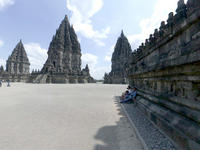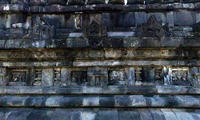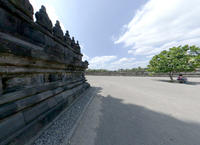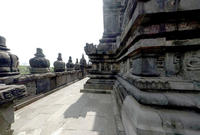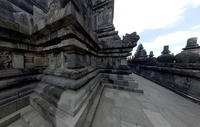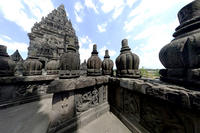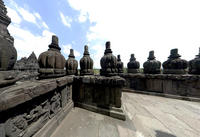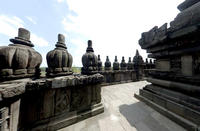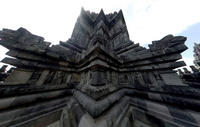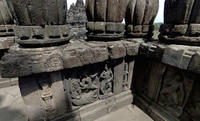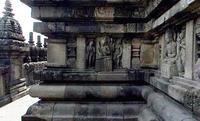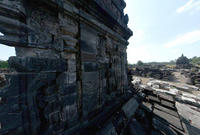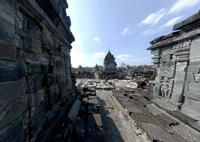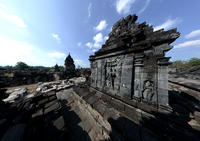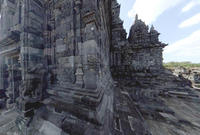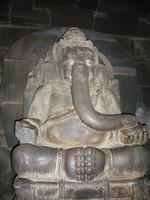You are in: Asia -> Indonesia -> Prambanan Temple Com... , and traditional search or Image Gallery will yield results of this site only
Prambanan Temple Compounds
| Site number: | 642 |
|
| Type of site: | Cultural | |
| Date: | 10th century | |
| Date of Inscription: | 1991 | |
| Location: | Asia, Indonesia, Province of Central Java | |
Up to 75 images are shown here. Click on each for more details or on Image Gallery for more images.
| Description: | The Prambanan Temple Compounds, built in the 10th century, is largest Indonesian complex dedicated to Shiva. Out of the centre of the last of these concentric squares rise three temples adorned with reliefs demonstrating the epic of the Ramayana-in honour of the three grand Hindu divinities (Shiva, Vishnu and Brahma) and three more temples - dedicated to the animals who serve them. --WHMNet paraphrase from the description at WHC Site, where additional information is available. For 360 degree imaging of this site, click here. | |
| Prambanan is the largest Hindu temple compound in Indonesia, located in Central Java, approximately 18 km east of Yogyakarta. It was built around 850 CE by either Rakai Pikatan, king of the second Mataram dynasty, or Balitung Maha Sambu, during the Sanjaya Dynasty. Not long after its construction, the temple was abandoned and began to deteriorate. Reconstruction of the compound began in 1918. The main building was completed in around 1953. Much of the original stonework, which has often been stolen and reused at remote construction sites. A temple will only be rebuilt if at least 75% of the original stones are available, and therefore only the foundation walls of most of the smaller shrines are now visible and with no plans for reconstruction. Today, the temple is a UNESCO World Heritage Site and is one of the largest Hindu temples in south-east Asia. It is characterised by its tall and pointed architecture, typical of Hindu temple architecture, and by the 47m high central building inside a large complex of individual temples. The temple was damaged during the earthquake in Java in 2006. Early photos suggested that although the complex appears to be structurally intact, damage is significant, with large pieces of debris, including carvings, scattered over the ground. The temple has been closed to the public until damage can be fully assessed. The head of Yogyakarta Archaeological Conservation Agency stated that: "it will take months to identify the precise damage". However, some weeks later in 2006 the site re-opened for visitors. The immediate surroundings of the Hindu temples remain off-limits for safety reason. --Wikipedia. Text is available under the Creative Commons Attribution-ShareAlike License. For 360 degree imaging of this site, click here. | ||
| Source: | http://whc.unesco.org/en/list/642 | |
| Reference: | 1. UNESCO World Heritage Center, Site Page. | |


